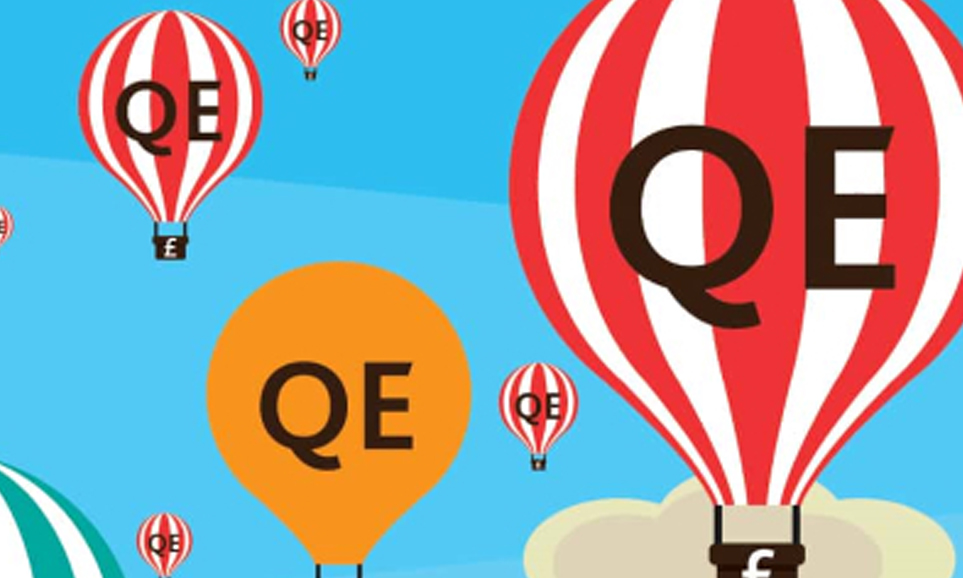
Now breath out … What is the impact of further QE likely to be and why is everyone so quiet?
In December 2018 there was barely a mention in the property press of the ECB’s decision to finally halt its’ Quantitative Easing (QE) programme after 5 years. After all, what was the problem? The UK had finished its own programme back in 2015 although the Bank of England had stepped in temporarily with a £60 billion top-up to steady markets following the initial BREXIT vote in 2016, and real estate investment markets across Europe were in rude health.
It was interesting therefore to see that the ECB is now reconsidering its position and may partially restart its QE programme to help support economic growth within the Eurozone. Again, barely a mention in the property press.
So why should the commercial real estate investment sector be paying more attention? What is the impact of further QE likely to be?
Well, let’s start at the beginning. QE was introduced by central banks to create liquidity and generate economic activity. It did this very well. Especially in property markets.
Property markets have benefitted enormously in two regards. In the residential markets, super low interest rates have kept housing affordable despite the rapid rise in asset values wile expansive economic policy has supported record levels of employment in key markets like UK and the Germany where unemployment rates are now at close to post war record lows.
In the commercial sector, the story has been broadly similar with companies expanding their workforce (thereby creating greater demand for space) while excess liquidity in financial markets has spilled over into CRE markets creating a huge demand for higher yielding assets. The net result has been a surge in pricing with prime yields reaching an all-time low in many markets.
All in all, QE has played a huge part in driving the recent bull run in European real estate investment markets.
Figure 1 shows the impact of QE on the UK housing and commercial property markets from when QE started in April 2009 to the present.

Figure 1 – UK Property Capital Growth & QE 2007 to 2018 (Source: BoE, MSCI, Nationwide March 2019)
The picture in the Eurozone is largely similar although the process started much later and may not yet have finished despite a break in December 2018. Figure 2 shows that experience.

Figure 2 – Eurozone CRE & QE (Source: ECB, MSCI, Nationwide March 2019)
What is immediately clear is that the European CRE investment markets, just like equity and fixed income markets, have benefitted from the glut of liquidity since 2009.
It is important however, to recognise that this liquidity hasn’t come directly from central banks into the CRE market but rather it has flooded in indirectly via asset managers, sovereign wealth funds, hedge funds, HNWI’s and many others looking for higher yielding assets to boost income returns.
Indeed, modern financial systems have grown dependent on huge central bank balance sheets. Yet not many people have noticed that the assets of some central banks around the world have begun to contract significantly relative to gross domestic product, for the first time since the 2008 crash.
It is very important that CRE investors understand this and the potential dangers/risks it creates for both financial markets and real economies because of the role played by central banks in the funding system.
On the face of it CRE investors should be worried as any reduction in liquidity would almost certainly put downward pressure on asset prices. In a post QE world, interest rates should rise pushing up the yield on government bonds and making property less attractive while general market liquidity should be reduced with a subsequent fall in investment volumes. So, what has actually happened?
Well, central banks and property markets are at a crossroads. Despite the current levels of liquidity CRE investment markets look risky to many investors who can only see downside going forward.
With employment at record levels (read demand) and yields at record lows (read expensive) it looks to many investors the market can only go one way. Indeed, how can it get any better?
Well, the demand side is particularly tricky and needs further investigation. One problem for CRE investors is that it is difficult to gauge how much of the current employment boom is sustainable vs “zombie” companies that would be unable to survive in “normal economic conditions”. In short, will a return to “normal” long term interest rates of say c.4% see a big spike in unemployment?
Equally difficult is how to gauge how much of the “equity” investors are looking to place in CRE markets isn’t in fact debt in their home market and susceptible to a rise in interest rates or fall in occupier demand.
With economic growth stalling in the UK and continental Europe this poses a real problem for policy makers. Do they abandon to the market to “natural forces” – effectively saying their interventionist policies of the last 5-10 years were wrong or do they step back in to support the market? Well, latest indications are that the ECB are just about to do that and there is growing evidence that the Federal Reserve is no longer willing or able to normalise rates in the way they had planned.
This SHOULD be good news for CRE investors by putting a floor in the market but in a sense it does nothing more than artificially extend a property cycle that should be well into down phase by now. Be careful what you wish for!
We can clearly see that QE has played a vital role in the recent bull run in European real estate investment markets, but further intervention may prove to be a double edged sword for the sector and only help to delay the inevitable. Its rapidly becoming a case of “at what point do you let go of the rising balloon”?






Leave a comment: